Body and Identity – OCAD Thesis Exhibition
March 20 – 31, 2013
Gallery 1313
Five artists, members of an OCAD sculpture and installation thesis program, are exhibiting their work at Gallery 1313. The works are variations upon the theme of environment, whether social or natural or both, criticizing perceiving imbalances and offering suggestions to remedy the situation. It raises questions and reveals ambiguities.
Katarina Tarrant’s Crown with Phallus, a work that evokes the debate between Jacques Lacan who did identify (along with Freud) the phallus with the penis, an identification with which philosopher and Belgian born feminist, Luce Irigaray and French philosopher, Jacques Derrida, disagreed. There are four components to Tarrant’s work. The first two are a video of the process of making the phallus mould and a video of the naked artist adorning the crown with phallus.
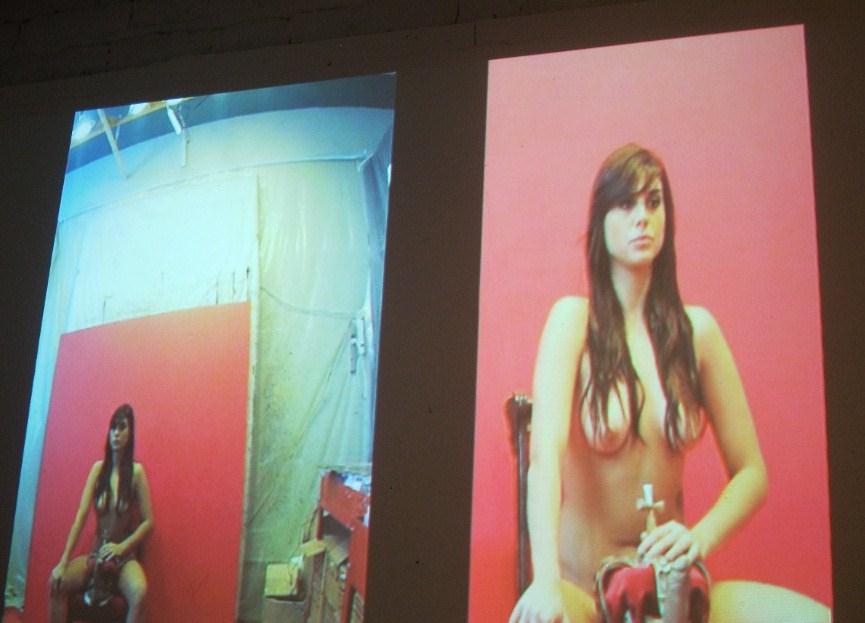 Katarina Tarrant, Crown with Phallus, video still
Katarina Tarrant, Crown with Phallus, video still
The other pieces are the crown itself resting on a pillow called The Masquerade I. and an acrylic, pencil work entitled Masquerade II. The crown has a cross. The artist in the video does not cross her legs, which is the ‘demure’ feminine custom, but openly faces the male gaze. She has the crown between her legs, appropriating traditional male symbols of power. Art rules through the power to alter the identity of self by invoking the power of the male sex.
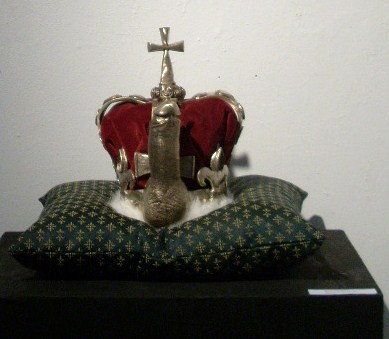 Katarina Tarrant, Crown with Phallus
Katarina Tarrant, Crown with Phallus
The phallus in this sculpture is and is not the penis. It is the penis only when it has been ‘beheaded’ as the ‘male head of state’ and reinstated as the extension of the female centre power of rebirth. Crown with Phallus is thus the inverted image of the Throne of the Vagina which only a female queen with the crown between her legs can sit on. It is the undressing, addressing, and redressing that defines the sensual texture of the four works.
Tara O’Connor’s Handmade Meat Labels is based on an intervention against the addictives commonly used in butchered meat sold in your friendly neighbourhood supermarket.
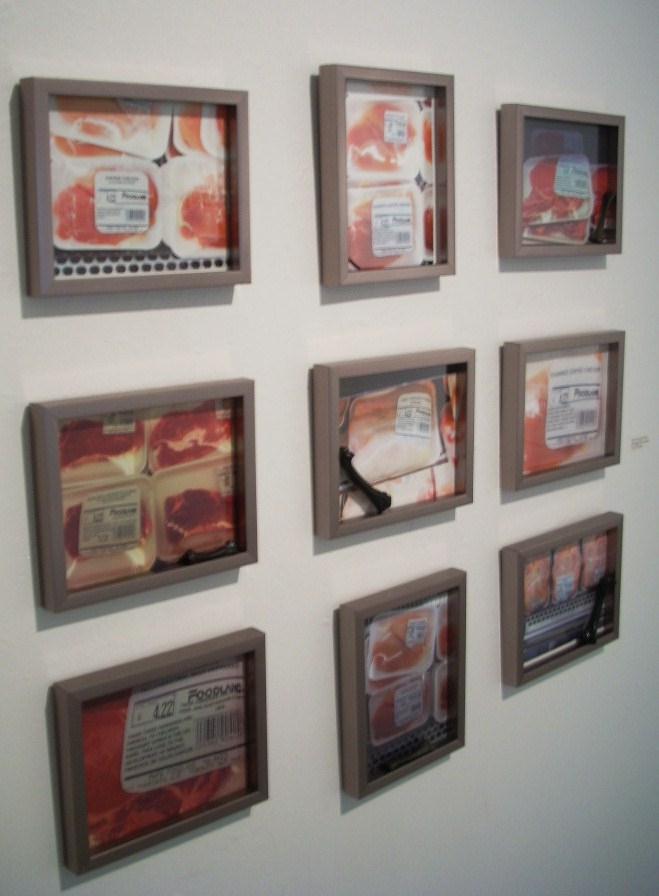 Tara O’Connor, Handmade Meat Labels
Tara O’Connor, Handmade Meat Labels
Her other work is that of a pig’s head mounted on a plaque titled Commodity Specimen overlooking a table with demonic pigs and bones, a combination portraying commercial practices as a mixture of the macabre and a sad reality.
The ‘meat’ of the market economy is the power of money to replace all human relations such as empathizing with fellow creatures. Capitalism is a vast butcher shop of dehumanizing relations. Under patriarchy phallus equals penis, as under capitalism, money equals need itself. So tell me: What do you need?
Christina Iannelli in her series, (re) production, uses 19 x 11 white spoons dripping with red sauce at their end to represent the traditional role of women in Italian culture.
 Christina Iannelli, (re) production
Christina Iannelli, (re) production
Women bleed, the artists says, both at giving birth as the main function of their reproductive life or through menstruation. Blood also represent their sacrifices to patriarchal authority that confines them to the kitchen and to the bedroom and often makes them victims of male violence. The red drippings on the grey gallery floor can equally be spaghetti sauce, or blood, or both.
Steven G. Kurtz, who uses ceramics, wood and metal, has five works in the show. One of them influenced by the oldest pieces of sculpture depicting eight female forms like the Venus of Willendorf. The other inspired by seaweed, while another by oil-eating mushrooms, and the last two are giant black bronze butterflies symbolizing polluted air.
 Steven G. Kurtz’s installation
Steven G. Kurtz’s installation
Steven’s main interest is in logo-centric ecological practices privileging human over non-human sentience.
Chantal Taylor’s work, depicting genetically modified organisms, is similar to O’Connor’s theme. Taylor’s piece is a double-helix display stand that has on one side Genetically Modified Food that can cause infertility, and other pernicious side-effects. The modification of nature is implied by current technology enabling a more invasive ‘working’ upon the code of life itself. On the other side Chantal’s projected vision of Modified Human-Based Food with positive, benevolent side-effects is a note of optimism balanced against Tara’s more polemic stance.
If art’s authority is the addressing, undressing, and redressing of the balance of power (Tarrant) to encourage a more integrated, empathetic societal body that is able to value things in themselves whether they are human (Iannelli) or not (O’Connor, Kurtz) then there is hope for a better world (Taylor). It also creates a power, a naked truth – a nakedness – that can only be glimpsed or experienced through cultivating the self-reflective and critical attitudes that each work embodies.
The future bodes well for a country whose ‘current crop’ is the leading and cutting edge of its culture.
David A. Ross
Photo: Phil Anderson

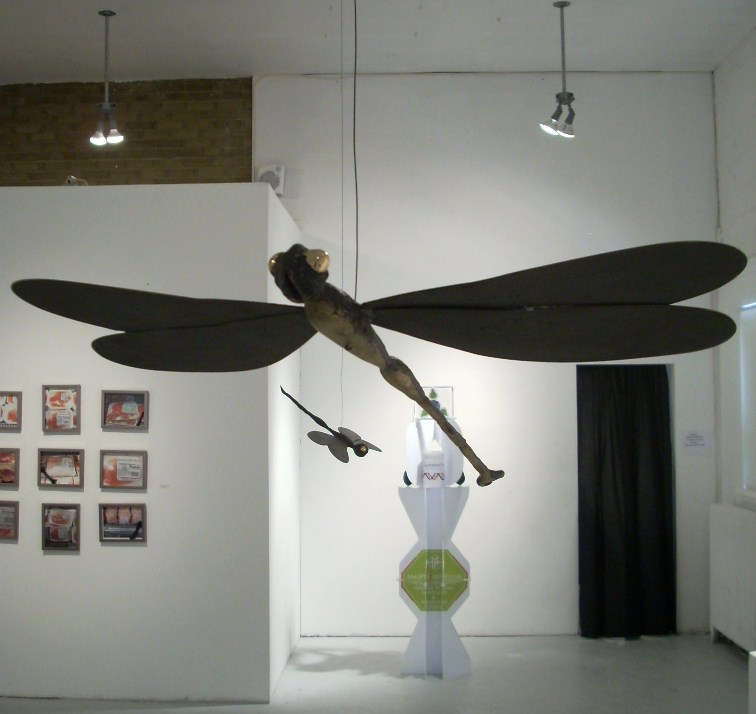
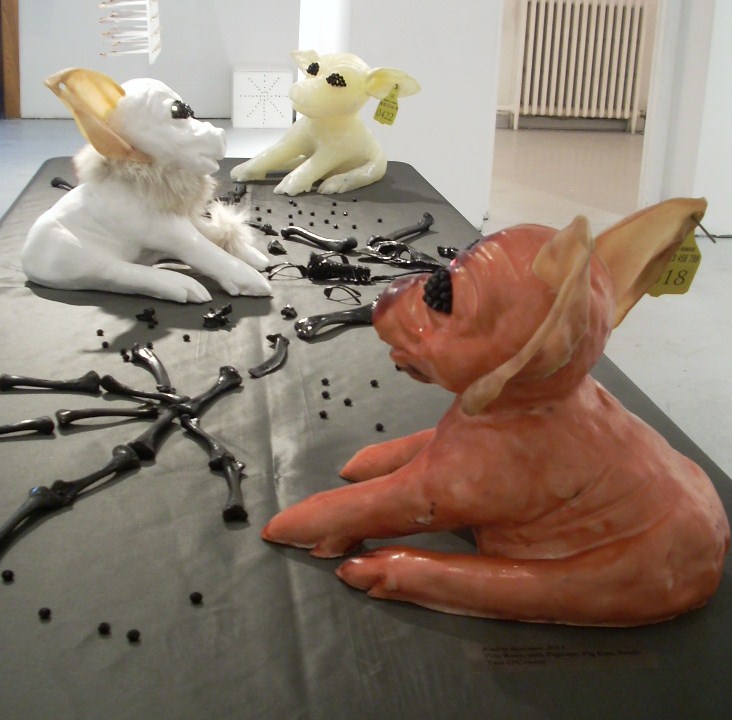
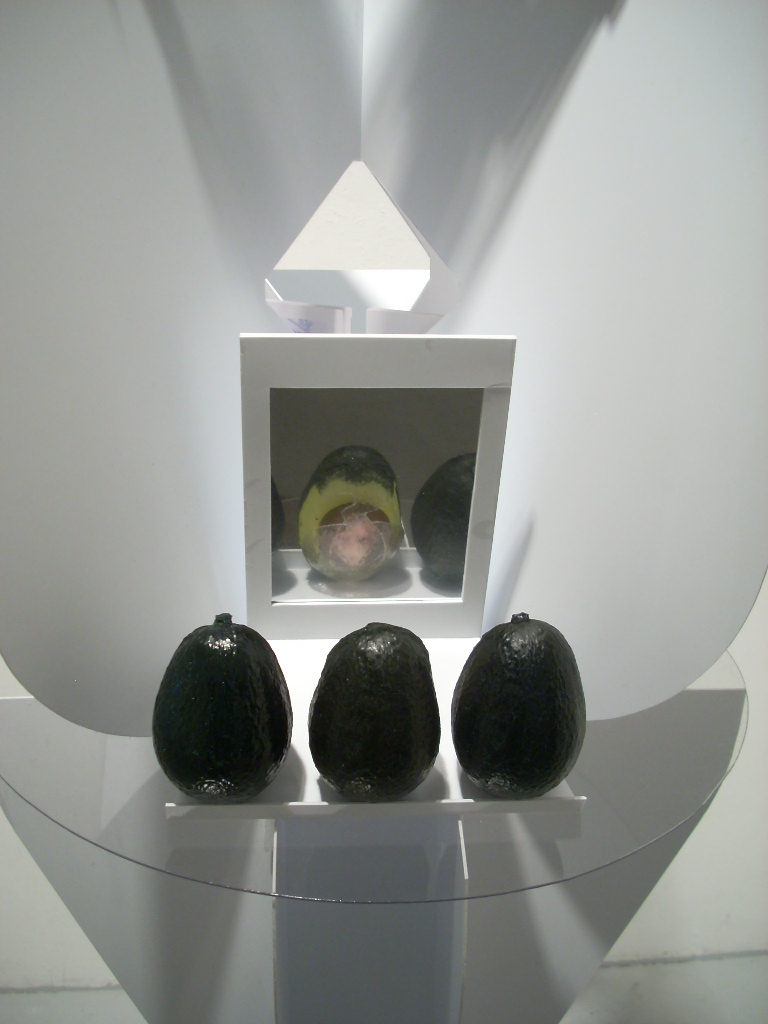
There are some awesome perspectives and pieces.
Katarina Tarrant’s are extemely bold statements that I find resonate in my mind.